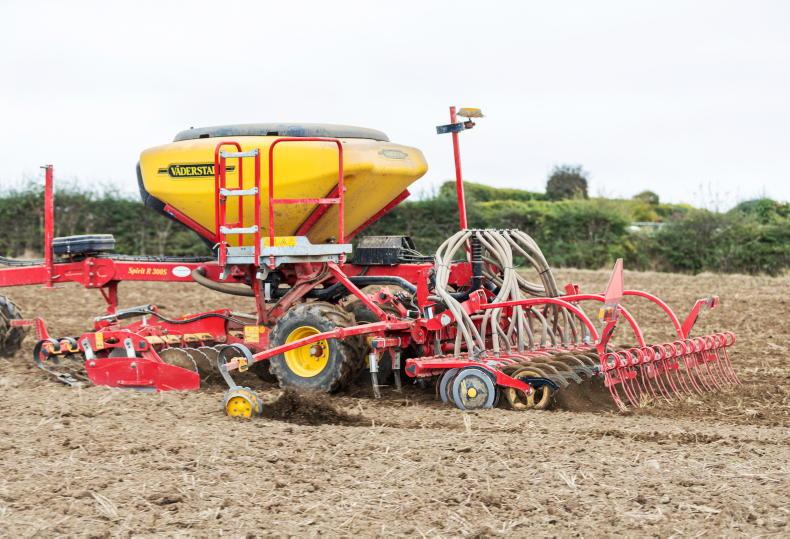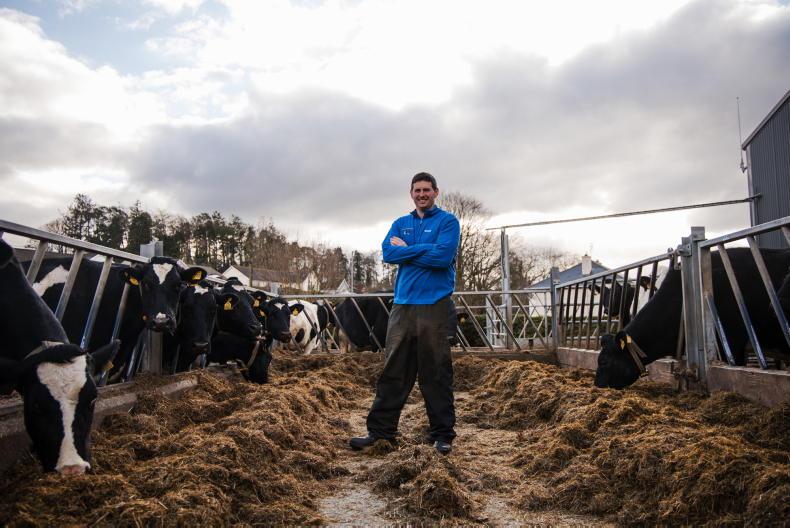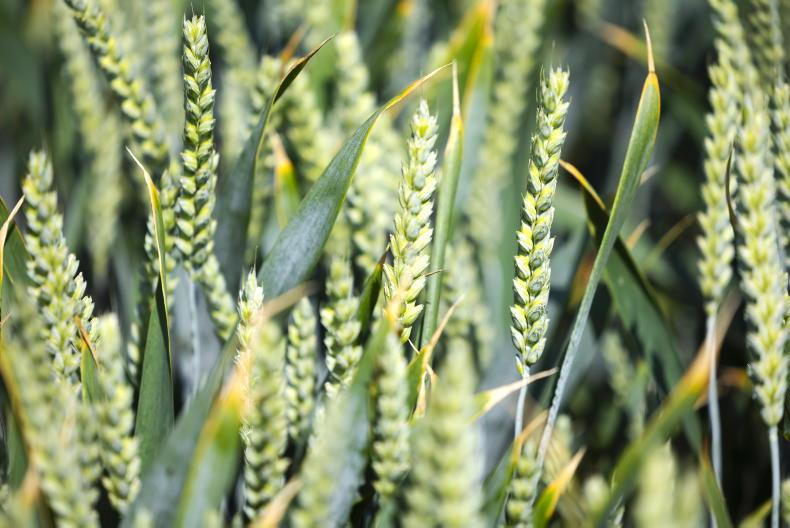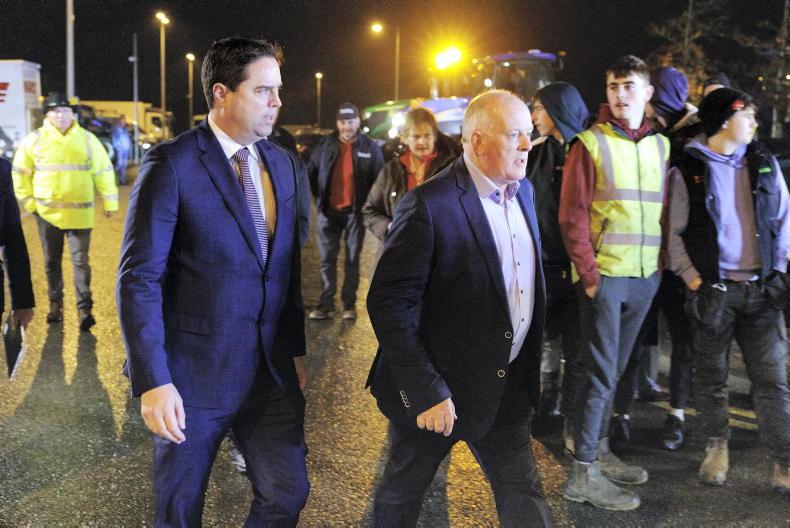Among the many consequences of the war in Ukraine has been the upending of the supply of vast amounts of grain from the world’s fifth largest producer. This has led to concerns over availability and fears of significant global shortages.
Tragically, this may result in a food crisis across many parts of the developing world, but its impact is felt globally, including in Ireland. As tillage only comprises a relatively small portion of Irish agriculture, Ireland imports about two-thirds of its grain requirements.
Ireland currently supplies approximately 1.8m tonnes of feed grains to an Irish feed market that has risen to over 6m tonnes. We also import all our flour needs except for a very small quantity from artisan milling.
To help address this problem, the Irish Government has sought to encourage greater cereal cultivation by means of payments through its Tillage Incentive Scheme. However, history shows that this is not the first time an Irish Government has attempted this.
The new State
After the famine of the 1840s, the area of Irish land devoted to cereal crops dropped sharply. This decline was most obvious in wheat, which dropped by over 90% from 1847 to the time of independence in 1922. This fall continued during the first 10 years of independence, because a central element of the new Government’s economic policy was the export of cattle to Britain. Tillage was deemed to be of little importance, and the new State continued to import most of its cereal requirements.
Although this cattle-centric policy had its economic logic, it had numerous opponents. Many thought it an unproductive use of land that failed to create employment, with the only benefactors being a few “graziers” and “ranchers”.
People who had only recently fought the British for independence also baulked at Ireland’s continued economic dependence on its larger neighbour, which was intrinsic in this policy of cattle exports to Britain.
Furthermore, the doctrines of self-sufficiency and economic protectionism were boosted in Ireland, as elsewhere, by a downturn in the world economy during the late 1920s and early 1930s.
These views were most notably expressed in the newly formed Fianna Fáil party that swept to power in 1932. Under the new Minister for Agriculture James Ryan, who came from a mixed tillage and livestock farm in Wexford and was an ardent believer in this diverse type of farming, the Government set about reversing the fortunes of tillage farmers in Ireland.
Wheat promotion
in the 1930s
The Government’s plan was laid out in the 1933 Agricultural Produce (Cereals) Act. Under this extensive piece of legislation, wheat, given its overall importance to self-sufficiency, was prioritised. Flour millers were compelled to purchase a set percentage of homegrown wheat while farmers were guaranteed a standard price for their wheat that considerably exceeded the market price.
Initially, this extra cost was met by the State, although from 1935, the cost of subsidising wheat growers fell on the shoulders of consumers rather than the exchequer, with the predictable rise in bread prices.

Tillage farmer Stephen Huddleston pictured sowing winter wheat on the outskirts of Maynooth, Co Kildare. \ Claire Nash

Tillage farmer Stephen Huddleston pictured sowing winter wheat on the outskirts of Maynooth, Co Kildare. \ Claire Nash
Although not receiving the same generous price, barley and oat production was also promoted as the legislation obliged that a certain percentage of animal feed be composed of homegrown grains, with restrictions also placed on the importation of animal feed and maize.
In many ways, the 1933 Act was a revolution in Irish farming, raising the hopes of many and the fears of others. In the words of then Minister for Industry and Commerce Seán Lemass, it marked the point “at which the Irish people have made up their minds that men, women and children, in happy homesteads on the land of Ireland, are to take the place of cattle and byres.” James Ryan was far more conciliatory and pragmatic, but nonetheless, he set an exceedingly ambitious goal of 1.5m extra acres of tillage.
By 1936, the wheat acreage had expanded to 255,000ac, over 11 times its 1932 level
In the tillage campaign’s first year, the Government could be happy that they were making progress, as barley and oats made slight gains and, more importantly, the wheat acreage doubled from the 22,000ac in the previous year.
Ryan was anxious to maintain this momentum and continuously increased the standard price, saying that “further stimulus is necessary in order to revive the tradition of wheat growing in this country.”
Set against the backdrop of an overall downturn in Irish agriculture, in large part due to an “economic war” with Britain that devastated the cattle trade, the prices offered for wheat were tempting to many. By 1936, the wheat acreage had expanded to 255,000ac, over 11 times its 1932 level.
Elsewhere, the Government’s tillage campaign made significant progress in increasing sugar beet production, with an extra three processing factories, on top of the already existing Carlow plant, established under a State company. This enabled the State to produce most of its sugar needs.
Feed grains a problem
Impressive as these achievements were, they had much less success regarding barley and oats. The new animal feed mixture with its set percentage of Irish-grown grain proved very unpopular, especially among small farmers. These farmers considered it inferior and more expensive to the pure maize meal they used previously. They also resented the fact that it benefited larger tillage farmers at their expense.
Indeed, even though the support of small farmers in the west was central to bringing Fianna Fáil to power, the party’s tillage policies offered them little benefit.
While agricultural inspectors made admirable efforts to convince these farmers that wheat could be grown in certain parts of the western counties, the practical constraints remained too great to expect any significant expansion.

The battle for acres between grass and grain has long been a feature of Irish agriculture.
Frequent patriotic appeals to grow wheat in the national interest also failed to overcome these farmers’ reservations.
The peak of the tillage campaign was in 1936, as its success was partly dependent on the misfortunes of the cattle trade. Cattle prices improved that year due to the gradual winding down of the economic war with Britain.
Consequently, farmers who turned their land to tillage during the worst of the economic crisis returned to the type of farming they were accustomed to.
The area gains in wheat were largely maintained. However, it appears that many tillage farmers in Leinster simply switched their production from barley and oats to the more remunerative cereal.
Thus by 1939, tillage only marginally increased over what it was at the start of the decade, and although the Government could still boast this increase in wheat, it was still far off what was needed to meet the country’s full requirements.
Swimming against the tide
The Government’s intensive campaign to promote tillage production during the 1930s is a salutary lesson that encouraging farmers to adopt tillage in a county so rooted to livestock has its difficulties. Indeed, with the outbreak of war in Europe in 1939 making self-sufficiency a matter of national survival, the policy of persuasion was abandoned, and compulsion became the order of the day.
So far, the present Irish Government has not had to return to this method. However, just as in the 1930s, a volatile geopolitical environment can have a far-reaching impact on food security and, consequently, Irish agriculture.
Nevertheless, despite the obvious failures of tillage incentivisation in the 1930s, there are reasons to hope that the current efforts can find greater success.
During the 1930s, the Government encouraged farmers to grow grain when it was widely available on the international market. In contrast, now there is a shortage, providing the current scheme with a firm and logical foundation.
Modern needs are multiple and different
Modern considerations around environmental sustainability and Ireland’s marketable image provide further sound reasons for Ireland to increase tillage production. Turning more land over to tillage has a naturally positive effect in reducing agricultural carbon emissions, thus easing the pressure on other sectors, especially dairy.
Additionally, by growing more of our grain at home, Ireland can reduce its dependence on animal feed imports from countries that use unsustainable farming practices that are not in keeping with the image Ireland wishes to present as a green food producer.
Thus, although current efforts to incentivise tillage may appear similar to those of the 1930s, the rationale underpinning these schemes is very much different. Whereas the policies of the 1930s were fundamentally motivated by political ideology, today’s motivation to increase tillage is based on practical economic and environmental sense.
The question now is what will it take to make it successful this time.
Efforts to incentivise tillage production in Ireland were also enacted back in the 1930s in an effort to have a more balanced agricultural system.Cereal production was encouraged through price incentives and through enforced usage to minimum obligatory inclusion levels. Those efforts failed because the majority of farmers had a natural tendency to gravitate towards livestock, and there were no environmental impediments in operation at that time.
Among the many consequences of the war in Ukraine has been the upending of the supply of vast amounts of grain from the world’s fifth largest producer. This has led to concerns over availability and fears of significant global shortages.
Tragically, this may result in a food crisis across many parts of the developing world, but its impact is felt globally, including in Ireland. As tillage only comprises a relatively small portion of Irish agriculture, Ireland imports about two-thirds of its grain requirements.
Ireland currently supplies approximately 1.8m tonnes of feed grains to an Irish feed market that has risen to over 6m tonnes. We also import all our flour needs except for a very small quantity from artisan milling.
To help address this problem, the Irish Government has sought to encourage greater cereal cultivation by means of payments through its Tillage Incentive Scheme. However, history shows that this is not the first time an Irish Government has attempted this.
The new State
After the famine of the 1840s, the area of Irish land devoted to cereal crops dropped sharply. This decline was most obvious in wheat, which dropped by over 90% from 1847 to the time of independence in 1922. This fall continued during the first 10 years of independence, because a central element of the new Government’s economic policy was the export of cattle to Britain. Tillage was deemed to be of little importance, and the new State continued to import most of its cereal requirements.
Although this cattle-centric policy had its economic logic, it had numerous opponents. Many thought it an unproductive use of land that failed to create employment, with the only benefactors being a few “graziers” and “ranchers”.
People who had only recently fought the British for independence also baulked at Ireland’s continued economic dependence on its larger neighbour, which was intrinsic in this policy of cattle exports to Britain.
Furthermore, the doctrines of self-sufficiency and economic protectionism were boosted in Ireland, as elsewhere, by a downturn in the world economy during the late 1920s and early 1930s.
These views were most notably expressed in the newly formed Fianna Fáil party that swept to power in 1932. Under the new Minister for Agriculture James Ryan, who came from a mixed tillage and livestock farm in Wexford and was an ardent believer in this diverse type of farming, the Government set about reversing the fortunes of tillage farmers in Ireland.
Wheat promotion
in the 1930s
The Government’s plan was laid out in the 1933 Agricultural Produce (Cereals) Act. Under this extensive piece of legislation, wheat, given its overall importance to self-sufficiency, was prioritised. Flour millers were compelled to purchase a set percentage of homegrown wheat while farmers were guaranteed a standard price for their wheat that considerably exceeded the market price.
Initially, this extra cost was met by the State, although from 1935, the cost of subsidising wheat growers fell on the shoulders of consumers rather than the exchequer, with the predictable rise in bread prices.

Tillage farmer Stephen Huddleston pictured sowing winter wheat on the outskirts of Maynooth, Co Kildare. \ Claire Nash

Tillage farmer Stephen Huddleston pictured sowing winter wheat on the outskirts of Maynooth, Co Kildare. \ Claire Nash
Although not receiving the same generous price, barley and oat production was also promoted as the legislation obliged that a certain percentage of animal feed be composed of homegrown grains, with restrictions also placed on the importation of animal feed and maize.
In many ways, the 1933 Act was a revolution in Irish farming, raising the hopes of many and the fears of others. In the words of then Minister for Industry and Commerce Seán Lemass, it marked the point “at which the Irish people have made up their minds that men, women and children, in happy homesteads on the land of Ireland, are to take the place of cattle and byres.” James Ryan was far more conciliatory and pragmatic, but nonetheless, he set an exceedingly ambitious goal of 1.5m extra acres of tillage.
By 1936, the wheat acreage had expanded to 255,000ac, over 11 times its 1932 level
In the tillage campaign’s first year, the Government could be happy that they were making progress, as barley and oats made slight gains and, more importantly, the wheat acreage doubled from the 22,000ac in the previous year.
Ryan was anxious to maintain this momentum and continuously increased the standard price, saying that “further stimulus is necessary in order to revive the tradition of wheat growing in this country.”
Set against the backdrop of an overall downturn in Irish agriculture, in large part due to an “economic war” with Britain that devastated the cattle trade, the prices offered for wheat were tempting to many. By 1936, the wheat acreage had expanded to 255,000ac, over 11 times its 1932 level.
Elsewhere, the Government’s tillage campaign made significant progress in increasing sugar beet production, with an extra three processing factories, on top of the already existing Carlow plant, established under a State company. This enabled the State to produce most of its sugar needs.
Feed grains a problem
Impressive as these achievements were, they had much less success regarding barley and oats. The new animal feed mixture with its set percentage of Irish-grown grain proved very unpopular, especially among small farmers. These farmers considered it inferior and more expensive to the pure maize meal they used previously. They also resented the fact that it benefited larger tillage farmers at their expense.
Indeed, even though the support of small farmers in the west was central to bringing Fianna Fáil to power, the party’s tillage policies offered them little benefit.
While agricultural inspectors made admirable efforts to convince these farmers that wheat could be grown in certain parts of the western counties, the practical constraints remained too great to expect any significant expansion.

The battle for acres between grass and grain has long been a feature of Irish agriculture.
Frequent patriotic appeals to grow wheat in the national interest also failed to overcome these farmers’ reservations.
The peak of the tillage campaign was in 1936, as its success was partly dependent on the misfortunes of the cattle trade. Cattle prices improved that year due to the gradual winding down of the economic war with Britain.
Consequently, farmers who turned their land to tillage during the worst of the economic crisis returned to the type of farming they were accustomed to.
The area gains in wheat were largely maintained. However, it appears that many tillage farmers in Leinster simply switched their production from barley and oats to the more remunerative cereal.
Thus by 1939, tillage only marginally increased over what it was at the start of the decade, and although the Government could still boast this increase in wheat, it was still far off what was needed to meet the country’s full requirements.
Swimming against the tide
The Government’s intensive campaign to promote tillage production during the 1930s is a salutary lesson that encouraging farmers to adopt tillage in a county so rooted to livestock has its difficulties. Indeed, with the outbreak of war in Europe in 1939 making self-sufficiency a matter of national survival, the policy of persuasion was abandoned, and compulsion became the order of the day.
So far, the present Irish Government has not had to return to this method. However, just as in the 1930s, a volatile geopolitical environment can have a far-reaching impact on food security and, consequently, Irish agriculture.
Nevertheless, despite the obvious failures of tillage incentivisation in the 1930s, there are reasons to hope that the current efforts can find greater success.
During the 1930s, the Government encouraged farmers to grow grain when it was widely available on the international market. In contrast, now there is a shortage, providing the current scheme with a firm and logical foundation.
Modern needs are multiple and different
Modern considerations around environmental sustainability and Ireland’s marketable image provide further sound reasons for Ireland to increase tillage production. Turning more land over to tillage has a naturally positive effect in reducing agricultural carbon emissions, thus easing the pressure on other sectors, especially dairy.
Additionally, by growing more of our grain at home, Ireland can reduce its dependence on animal feed imports from countries that use unsustainable farming practices that are not in keeping with the image Ireland wishes to present as a green food producer.
Thus, although current efforts to incentivise tillage may appear similar to those of the 1930s, the rationale underpinning these schemes is very much different. Whereas the policies of the 1930s were fundamentally motivated by political ideology, today’s motivation to increase tillage is based on practical economic and environmental sense.
The question now is what will it take to make it successful this time.
Efforts to incentivise tillage production in Ireland were also enacted back in the 1930s in an effort to have a more balanced agricultural system.Cereal production was encouraged through price incentives and through enforced usage to minimum obligatory inclusion levels. Those efforts failed because the majority of farmers had a natural tendency to gravitate towards livestock, and there were no environmental impediments in operation at that time. 












SHARING OPTIONS